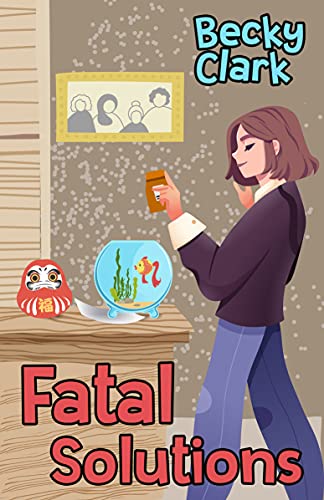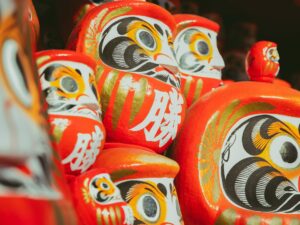I’m always surprised at the amount of research my cozy mysteries require. I mean, they’re not police procedurals or historicals or true crime or anything, but there’s always a ton of stuff to dig deeper into while I’m outlining, writing, and editing.
For instance, in FATAL SOLUTIONS (book #3 in the Crossword Puzzle Mysteries), a quick trip through my binder shows me all the bits of research materials I needed.
• conversations with a forensic anthropologist (always so fascinating)
• guides to Colorado wildflowers, even though I’m a native Coloradoan
• mind-numbingly boring explanations about quit claim deeds
• US Department of the Interior forms, certifications, and descriptions of National Historic Landmarks (not nearly as boring as they sound)
• photos of huge spice racks for Georgeanne’s pantry
• photos of US Army folding chairs from the 1940s
• photos of acoustic ceiling tiles
• photos of vintage WWI cast iron 3-inch-tall Army men toys
• photos of antique roll-top desks
• yet more research and treatment of OCD (I learn something new with each book)
• heart-breaking information about Camp Amache (AKA Granada Relocation Center), a WWII Japanese internment camp here in Colorado
But the most interesting research to me was learning about daruma dolls. These play a big role in FATAL SOLUTIONS. So big, in fact, I insisted there be one on the cover (along with Fang the goldfish who never gets enough respect)
I’d seen daruma dolls here and there, hither and yon, over the course of my life, but never knew what they were called, or that they even had a purpose.
Japanese daruma dolls never have arms or legs, just that rotund little body. They come in all sizes, but only that one shape, and almost always red.
There are many legends as to the origins of daruma dolls, but the most prevalent is that Bodhidharma (the figurehead of Zen Buddhism in China, called “Daruma” in Japan), wanted to enter a temple but was denied access. So he did what any good monk would do … he stared at a wall inside a cave for nine years, starting a form of meditation still seen today in Zen Buddhism. In those nine long years, his limbs wasted away. Some accounts say he fell asleep at year seven then cut off his eyelids so that wouldn’t happen again.
I’m not sure about all that, but it certainly explains the lack of arms and legs and the wide white eyes of daruma dolls.
Today, daruma dolls are sometimes known as “wishing” dolls and are symbolic of achievement. When you receive a daruma doll, the eyes are just the plain white circles. When you articulate a specific goal you want to achieve, you paint in one of the eyes. Your daruma sits in a place where you’ll get a constant reminder of what you’re trying to do. When you reach your goal, you paint in the other eye, showing you’ve reached “full sight” of your achievement. Then your daruma doll rests in a place of honor to remind you of your capabilities.
I just love that.
So often we kinda-sorta set goals, but this is a lovely, tangible tribute to your achievements. Much like a newly-launched book sits on the shelf near the desk where you wrote it.
I hope you enjoy reading FATAL SOLUTIONS as much as I enjoyed writing it, and that we can both point to many more achievements in our futures!
What achievement would you use your daruma doll to help you with?



4 thoughts on “Daruma Dolls”
That is so interesting!! When I lived in Japan (for 3 years), I saw these daruma dolls, but I never knew the backstory! We also saw many kokeshi dolls (which also have no arms or legs, but are slimmer figures, lol). If one were to come over for a visit, one could spot several kokeshi dolls in my home! 😊
I had to look up kokeshi dolls but then I recognized them. Never knew what they were called. They’re so cute, I can see why you’d collect them, Emily!
I had to look up daruma dolls. I love the meaning behind them. I had no idea about them. My friend gifted me with Korean wedding ducks that are painted vibrant shades and supposed to bring happiness.
I enjoyed reading Fatal Solutions.
Thanks so much, Allyson! I had to look up Korean wedding ducks. They are gorgeous. And what a great story behind them, although I bet people are glad that they don’t give live ducks anymore. Don’t get me wrong, I love ducks, but I’m guessing one could have too many these days!